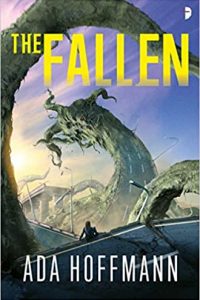Alvaro Zinos-Amaro Reviews Brian W. Aldiss by Paul Kincaid
 Brian W. Aldiss, Paul Kincaid (University of Illinois Press 978-0252044489, $25.00, 216pp, tp) July 2022.
Brian W. Aldiss, Paul Kincaid (University of Illinois Press 978-0252044489, $25.00, 216pp, tp) July 2022.
“There is almost too much to be said about Brian Aldiss,” Paul Kincaid observes early on in this book. Indeed, “in a career of sixty years Brian Aldiss produced over eighty books and more than four hundred short stories, not counting his numerous poems, plays, and other occasional writings.” These books include a notable history of the genre, Billion Year Spree (1973; later revised and expanded with David Wingrove as Trillion Year Spree, 1986), tomes of reminiscences, autobiography, poetry and critical essays, sequences of mainstream novels, and of course heaps and heaps of science fiction of almost every conceivable flavor. Kincaid, whose previous works include the thoughtful non-fiction collections What It Is We Do When We Read Science Fiction (2008) and Call and Response (2014), as well as the insightful author-specific volumes Ian M. Banks (2017) and The Unstable Realities of Christopher Priest (2020), is perfectly suited to the task at hand, and says just the right amount. In his study on Roger Zelazny – winner, in 1966, of the first Nebula Award for Best Novella for “He Who Shapes”, along with Aldiss’s own “The Saliva Tree” – F. Brett Cox wrote that Zelazny was “a writer whose achievements were built on a network of contradictions.” Likewise, Aldiss’s extensive bibliography is replete with “contrasts and contradictions.” Part of this book’s appeal and usefulness is Kincaid’s deft navigation of these tricky waters, often made even more complicated by baroque publishing histories.
Kincaid’s organizational approach effectively orients us and frees us up for in-depth textual discussions of key works. Six chapters manage the neat trick of proceeding chronologically while also clustering major movements conceptually. In “Warrior” we learn about Aldiss’s time in the army, which would sprout “a fascination with lush and overabundant vegetation,” as well as an overarching sense of disappointment at “the madness of civilization,” along with chilly currents of “despair and alienation” that show up time and again in his work. Aldiss’s productivity was there from the start: “Between 1954, when ‘Criminal Record’ first appeared, and the end of 1959, he published 56 short stories.” The 1960s, including books like Hothouse (1962) and Cryptozoic! (1967), are addressed in “Naturalist”. By the time we get to the mid-1960s “Aldiss was generally being hailed as the best science fiction writer in Britain,” and this period gives way to a burst of New Wave inventiveness, discussed in the third chapter, “Experimentalist”. Aldiss’s role as genre “Historian,” Kincaid persuasively argues, “prompted much of his own fiction through the 1970s and on into the 1990s, covering works such as Frankenstein Unbound (1973), Moreau’s Other Island (1980), Dracula Unbound (1991), and The Malacia Tapestry.” The fifth chapter sees Aldiss deploying his background and secular worldview as a “Scientist” to forge the Helliconia Trilogy, “easily the longest and most ambitious single work of Brian Aldiss’s career,” though lamentably, “the first two volumes got away from him,” the whole enterprise thus failing to deliver the commercial and critical success Aldiss was hoping for. The concluding “Utopian” is a sobering study of decline, during which most of Aldiss’s fiction is characterized by a “heavy emphasis on the past.” This ending survey of Aldiss’s last years captures “the drumbeat of unhappiness and the failure to find meaning in life.”
Throughout his study, Kincaid makes diligent but studiously skeptical use of the autobiography The Twinkling of an Eye, which Kincaid acknowledges “contains too many easily refutable errors of fact to be totally reliable.” Besides addressing all the important genre works, Kincaid gives non-genre material its due, starting with the non-fiction The Brightfount Diaries, all the way through the mainstream fiction Squire Quartet and beyond. Kincaid’s style is direct and inviting, sometimes refreshingly informal, as when for example he describes Barefoot in the Head as “blokeish.” He makes use of relevant personal experiences (for instance, once, after writing in favor of John Wyndham, he received a postcard from Aldiss demanding: “Why do you hate me so?”) and candidly disagrees with historical reception whenever relevant (e.g. “I feel that Frankenstein Unbound is a slight, superficial work, but it was widely hailed at the time of its publication”). His opinions can be amusingly disparaging (“White Mars is marred by its atrocious sexual politics, its naiveté about the practicalities of establishing a utopia, and the sense that the author of Aldiss’s previous books couldn’t possibly believe a word of this. On top of that, it is dull”) but are never undefended.
At the start of Brian W. Aldiss, I found myself wondering why, as Kincaid, points out, it should be that Aldiss’s work is “easier to admire than to love,” and by the end I had an answer. Many of Aldiss’s best novels combine themes of stasis and estrangement, wrapped up in various formally challenging schemes. Some, like The Dark Light Years and Earthworks, are pointedly misanthropic. Aldiss’s alternating anger and dejection at humanity’s perpetual failures color even many of his more conventional narratives. Then there’s the recurring “priapic masculinity,” probably informed by Aldiss’s wartime experiences with sex workers, and a strong anti-colonialist stance that, while at times prescient, can also give way to an “orientalist attitude.” Aldiss, at his best, channels and stylistically modernizes the headiest of H.G. Wells’s ideas and critiques, but the sense of wonder is often swapped out for cosmic disaffection. In Bury My Heart at W.H. Smith’s, Aldiss writes: “Whatever creativity is, it is in part a solution to a problem.” As Kincaid’s elegant overview makes clear, Aldiss’s work is not only a paean to ceaseless creativity, but a testament to an almost compulsive preoccupation with generating new problems towards whose solution that same sparkling creativity may be directed.
This review and more like it in the October 2022 issue of Locus.
 While you are here, please take a moment to support Locus with a one-time or recurring donation. We rely on reader donations to keep the magazine and site going, and would like to keep the site paywall free, but WE NEED YOUR FINANCIAL SUPPORT to continue quality coverage of the science fiction and fantasy field.
While you are here, please take a moment to support Locus with a one-time or recurring donation. We rely on reader donations to keep the magazine and site going, and would like to keep the site paywall free, but WE NEED YOUR FINANCIAL SUPPORT to continue quality coverage of the science fiction and fantasy field.
©Locus Magazine. Copyrighted material may not be republished without permission of LSFF.







